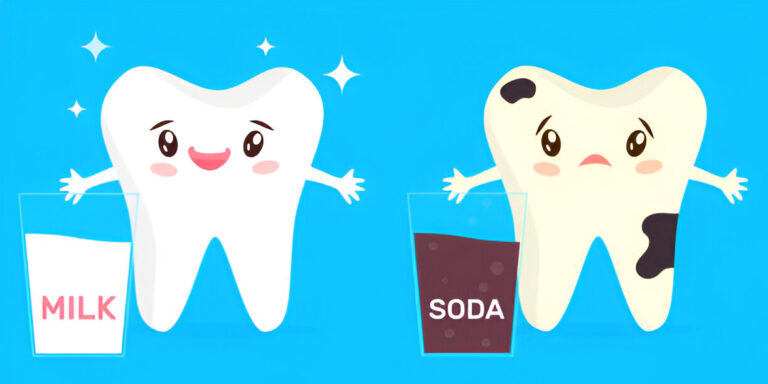We all strive for a bright smile. Yet, certain foods and habits can leave our teeth stained. Coffee, tea, and red wine are prime culprits. They contain chromogens that cling to tooth enamel. Berries and beets, despite their health benefits, can also darken our teeth. Smoking not only affects overall health but also deeply stains teeth. Even some mouthwashes, with chlorhexidine and cetylpyridinium chloride, can contribute to discoloration. Brushing immediately after consuming these items may help. However, routine care is more effective after treatment. Suncreek dental suggests professional cleanings to tackle tough stains. Changing daily habits can also make a difference. For instance, drinking through a straw reduces contact with teeth. Chewing sugarless gum stimulates saliva, which helps wash away food particles. By understanding these factors, we can take steps to maintain a brighter smile. A few mindful changes today can lead to lasting results tomorrow.
Common Foods That Contribute to Staining
Several everyday foods and drinks can stain our teeth. Here are some common ones:
- Tea and Coffee: Both are rich in tannins, which can lead to stains.
- Red Wine: Known for its dark pigment, it can easily discolor teeth.
- Soda: Dark sodas, in particular, have acids and dyes that contribute to staining.
- Berries: Blueberries, blackberries, and cherries can leave a mark on enamel.
- Beets: Their deep color is notorious for causing stains.
Habits that Lead to Staining
It’s not just food and drink. Certain habits can also cause teeth to stain:
- Smoking: Tobacco in any form can cause yellowing and deep stains.
- Poor Oral Hygiene: Without regular brushing and flossing, plaque buildup can lead to discoloration.
- Using Certain Mouthwashes: Some mouthwashes contain ingredients that may stain teeth over time.
Impact of Staining on Oral Health
Staining does more than affect aesthetics. It can signal deeper issues with dental hygiene. Stains can reveal areas where plaque has settled. Over time, this can lead to decay. The National Institute of Dental and Craniofacial Research emphasizes the importance of regular dental visits. These visits help in identifying and addressing any underlying issues early on.
Effective Habits for Prevention
We can adopt habits that help prevent staining. Consider these strategies:
- Drink Water: Rinse your mouth with water after consuming staining foods or drinks.
- Use a Straw: This reduces the liquid’s contact with teeth.
- Brush Regularly: Twice a day with fluoride toothpaste helps maintain a clean surface.
Comparison of Common Staining Culprits
| Item | Staining Potential | Preventive Measure |
| Coffee | High | Use a straw, rinse with water |
| Red Wine | High | Rinse with water |
| Tea | Medium | Use a straw, rinse with water |
| Soda | Medium | Use a straw, rinse with water |
| Berries | Medium | Brush or rinse afterwards |
Professional Treatments
Sometimes, home remedies aren’t enough. Professional treatments can offer deeper cleaning. Dental cleanings remove plaque and tartar. Whitening treatments address deeper stains. According to the American Dental Association, it’s crucial to consult with a dentist. They can recommend the best course of action based on individual needs.
Conclusion
A bright smile is achievable with mindful choices. By understanding the foods and habits that stain teeth, we can make informed decisions. Small adjustments in daily routines can prevent stains. Regular dental check-ups further ensure oral health. Remember, a healthy smile is a bright smile.


